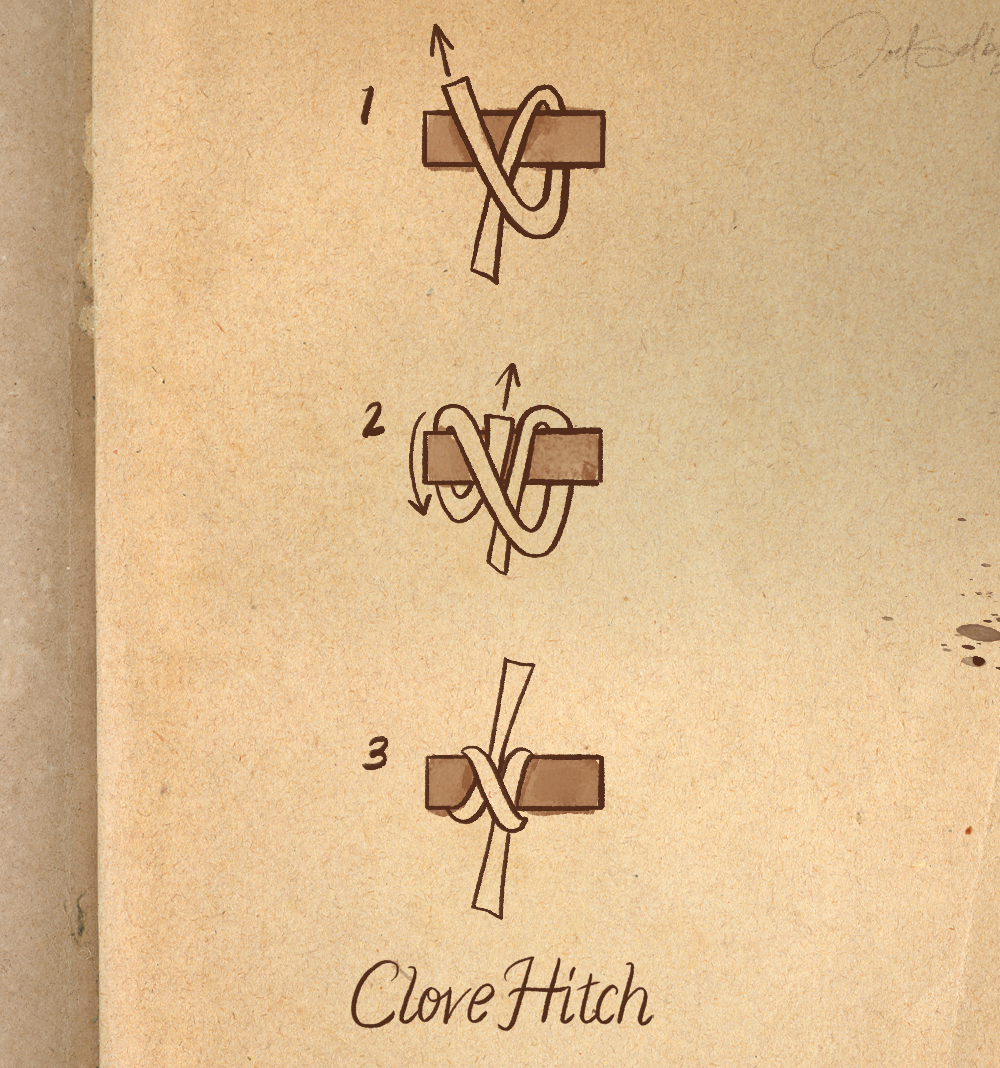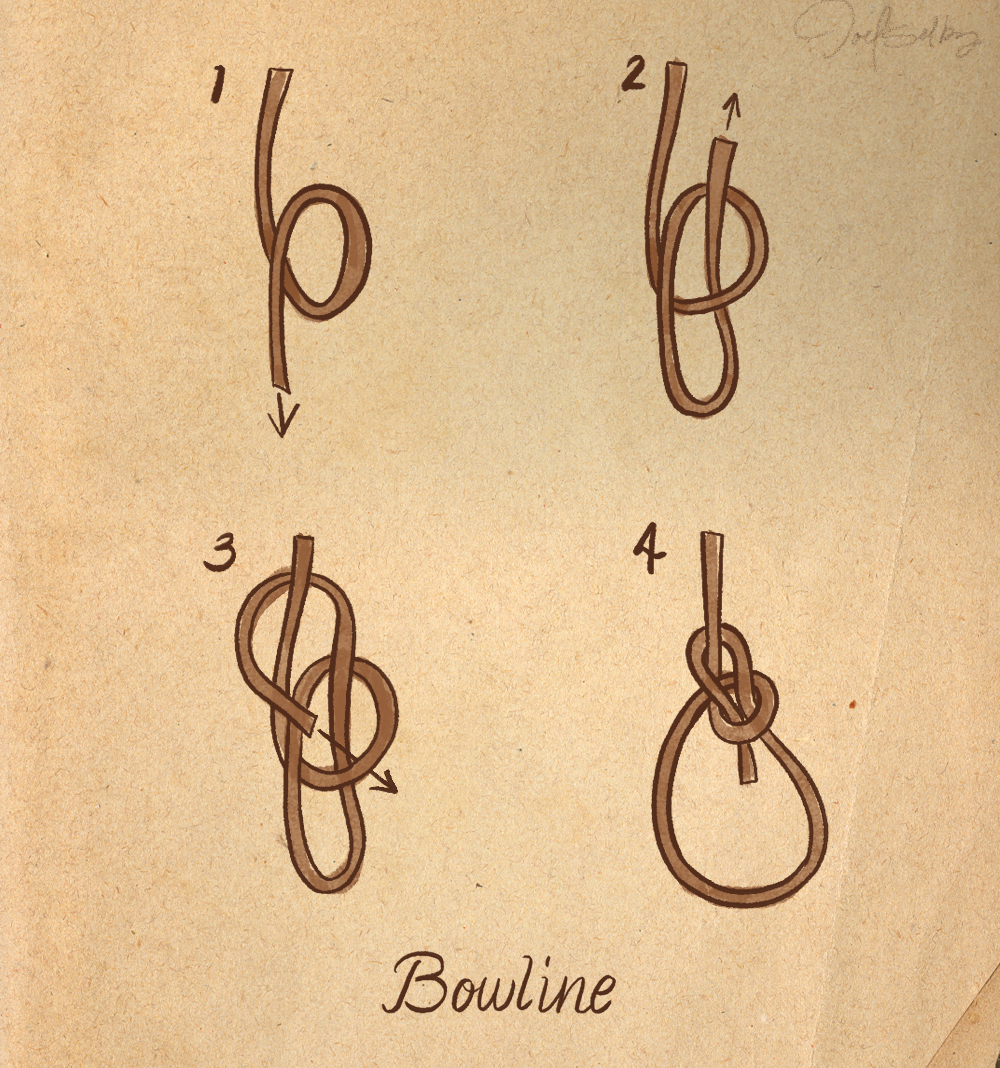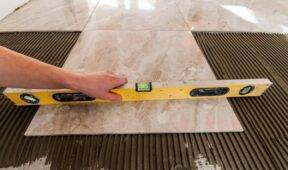The Three Basic Knots You Actually Need to Know

Knot tying. It’s a thing. If you read any “men's lifestyle” content, you've no doubt seen an exhaustive list of “essential knots every man needs to know.” You proceed to read their list of seven, or ten, or fourteen, and by the time you get to the bottom of the list, you can't even remember the name of the first one, let alone how to tie it.
No, we say. Not fourteen. Not essential, unless you're a climber or sailor. Instead, practically, you only need to know three. That's right, three. Learn how to do them and what they're good for, and the usefulness of some simple knot skills runs the full range of preventing minor irritation to saving your life. So, if all you know is the overhand knot from having learned to tie your shoes as a kid, it's time for a brush-up on your skillset.
The three elements of every great knot: it should be easy to tie, easy to untie, and useful for a specific task.
And this is the reason you need to know more than one: there’s really no jack-of-all-trades, catch-all knot.

1. Tying around an object to secure it: The Reef Knot
Any good knot resource is going to start with the reef knot, also known as the square knot. It's a really old knot, even showing up in ancient Greek and Egyptian art. It's very easy to learn and it's much more secure than the overhand knot used for shoes. (Switch to the square knot today and sidestep the inconvenience of loose laces or struggling to untie your double knots at the end of the day!)
Mnemonic rhyme: Right over left, left over right, makes a reef knot both tidy and tight.

2. Tying to a pole: Clove Hitch
I can’t tell you how many times I’ve needed to securely tie the end of a rope to a stationary object. It’s a winner for hanging a hammock or a clothesline. At the beginning of December it will also save you frustration when you’re securing a Christmas tree to the top of your car and your ratchet straps are too jammed to cinch tight. (Not that I have any personal experience with that.)
Mnemonic rhyme: loop right around the pole, loop left around the pole, then up through the hole.

3. Tying a loop: Bowline
When you need to make a loop, this is your knot. When subjected to tension, the loop keeps its shape, and you can still untie it after it’s borne its load. It’s also a fantastic tie-down knot. (I'm looking at you, tent pegs.) You can even lower the loop to have someone step into or sit down in in order to pull them up out of a hole in the ground.
Mnemonic story: make a hole; rabbit hops up out of the hole, runs around the tree, and back down the hole.
(Incidentally, just in case you needed convincing of these knots’ pedigrees, variations of these three knots are part of the four fundamental maritime knots, as well as the International Guild of Knot Tyers’ tying-against-the-clock six-knot challenge. Master these and you’re on your way to street cred with your buddy in the Navy.)
Practical suggestion for developing your skills:
Unless you wear espadrilles or you’re single-handedly bringing back penny loafers, you can practice the reef knot on your shoes every day. (Make a loop on each lace end, like you normally use for the bow, so you can untie them easier. Just don't pull it too tight!) For practicing other knots, I keep a 3-foot-long piece of wrapped-up cotton line in my pocket as part of my EDC for when I’ve got time to kill and haven’t brought a book with me.
Suggestions for further reading:
After you master these three knots and you find yourself hooked, check out The Field Guide to Knots: How to Identify, Tie, and Untie Over 80 Essential Knots for Outdoor Pursuits by Bob Holtzman.
For even deeper reading, The Ashley Book of Knots by Clifford Ashley is considered the definitive reference book on knots. It's got over 3900 variations, each being tagged with its own serial number (for example, the reef knot is ABOK #1204)—which, quite frankly, is too cool for school.









